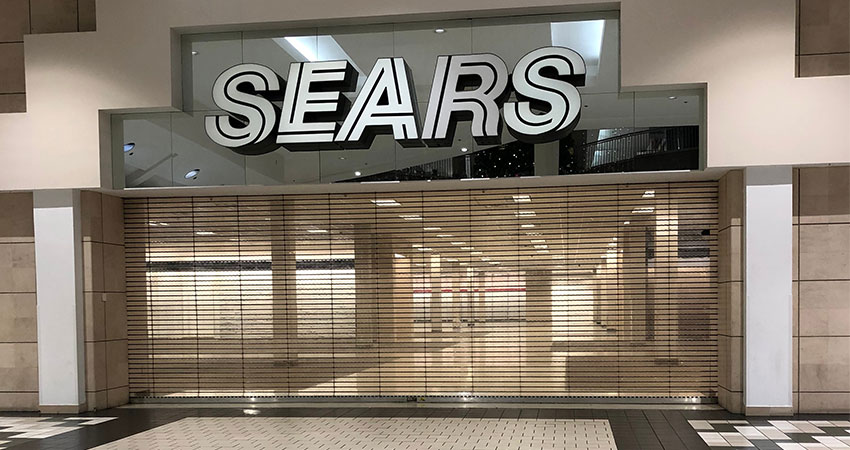An empty Sears store in a mall in Spokane, WA (source: Shutterstock)
It was only a matter of time. And in these times, it makes perfect sense.
Amazon is working with Simon Property Group, the largest owner/operator of shopping malls in the country, to convert some shuttered anchor stores into local fulfillment centers to augment its already massive network and facilitate last-mile speed, the Wall Street Journal reported.
The move is necessitated by the fact that despite having 187 fulfillment centers, 57 outbound sortation centers and 55 Prime Now hubs in the U.S. (per MWPVL research), Amazon has been so deluged with orders it has seen unprecedented delays and had to tighten limits on shippers.
The focus of the talks has been on spaces formerly occupied by bankrupt chains J.C. Penney and Sears, according to WSJ. That’s interesting as Amazon was reportedly in acquisition talks with management of J.C. Penney at its Plano, TX headquarters in May, when it filed Chapter 11. Cherry picking leased mall locations in strategic metros instead of acquiring the business probably makes more sense for the ecommerce giant.
Also interesting is the fact that Simon considering this move, basically an abandonment of its traditional model of major anchor stores to draw traffic and keep the other retail tenants intact. The lack of an anchor tenant can trigger exit clauses or rent reduction. But in the current environment, with mall traffic all but gone, a decision has to be made. Simon owns 204 malls in the U.S.
This is not a new approach for Amazon, which had already been gobbling up mall locations for fulfillment hubs, including last year in Ohio. It would also not be a radical departure from the growing practice of ship from store, which of course has been seriously accelerated since the pandemic began.
Brittain Ladd, a former Amazon executive who is now CMO of Pulse Integration and consults on micro fulfillment, said dying malls are a perfect fit for Amazon or even logistics players to upgrade their last mile networks.
“Malls make great fulfillment centers as they already have water, sewer and electricity and they’re located near major highways,” Ladd said. “In addition, they’re also near large population centers, making it easier to fulfill orders closer to customers.”

